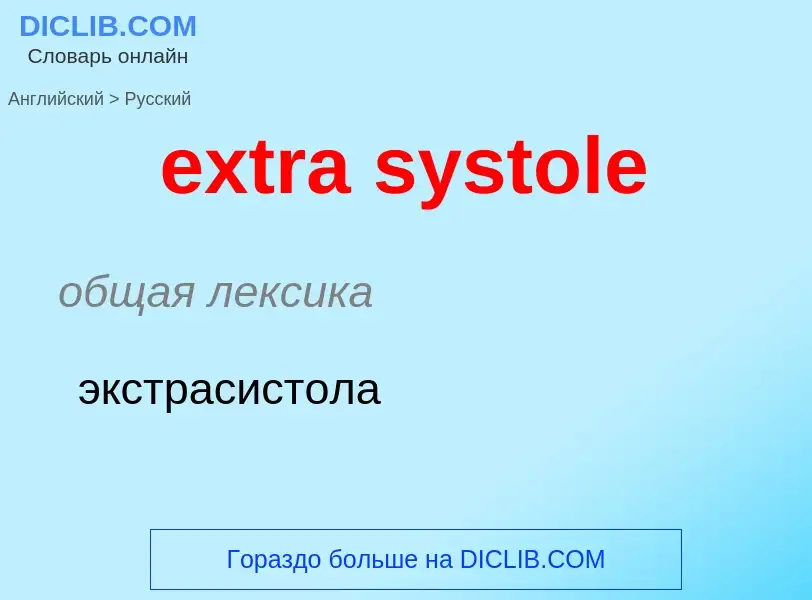Tradução e análise de palavras por inteligência artificial ChatGPT
Nesta página você pode obter uma análise detalhada de uma palavra ou frase, produzida usando a melhor tecnologia de inteligência artificial até o momento:
- como a palavra é usada
- frequência de uso
- é usado com mais frequência na fala oral ou escrita
- opções de tradução de palavras
- exemplos de uso (várias frases com tradução)
- etimologia
extra systole - tradução para russo
общая лексика
экстрасистола
['sistəlt]
общая лексика
систола
систолический
Смотрите также
существительное
физиология
систола
сокращение сердца
[si'stɔlik]
общая лексика
систолический
прилагательное
физиология
систолический
Definição
Wikipédia
Systole ( SIST-ə-lee) is the part of the cardiac cycle during which some chambers of the heart contract after refilling with blood. The term originates, via New Latin, from Ancient Greek συστολή (sustolē), from συστέλλειν (sustéllein 'to contract'; from σύν sun 'together' + στέλλειν stéllein 'to send'), and is similar to the use of the English term to squeeze.
The mammalian heart has four chambers: the left atrium above the left ventricle (lighter pink, see graphic), which two are connected through the mitral (or bicuspid) valve; and the right atrium above the right ventricle (lighter blue), connected through the tricuspid valve. The atria are the receiving blood chambers for the circulation of blood and the ventricles are the discharging chambers.
In late ventricular diastole, the atrial chambers contract and send blood to the ventricles. This flow fills the ventricles with blood, and the resulting pressure closes the valves to the atria. The ventricles now perform isovolumetric contraction, which is contraction while all valves are closed. This contraction ends the first stage of systole. The second stage proceeds immediately, pumping oxygenated blood from the left ventricle through the aortic valve and aorta to all body systems, and simultaneously pumping oxygen-poor blood from the right ventricle through the pulmonic valve and pulmonary artery to the lungs. Thus, the pairs of chambers (upper atria and lower ventricles) contract in alternating sequence to each other. First, atrial contraction feeds blood into the ventricles, then ventricular contraction pumps blood out of the heart to the body systems, including the lungs for resupply of oxygen.
Cardiac systole is the contraction of the cardiac muscle in response to an electrochemical stimulus to the heart's cells (cardiomyocytes).
Cardiac output is the volume of blood pumped by the ventricles in one minute. The ejection fraction is the volume of blood pumped divided by the total volume of blood in the left ventricle.

